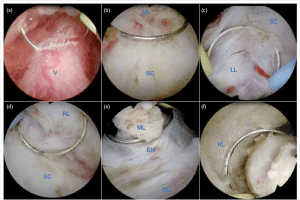Transurethral Resection of the Prostate
At Royan Urology, we understand the challenges faced when dealing with an enlarged prostate, also known as benign prostatic hyperplasia (BPH). One of the most effective treatments we offer for this condition is the transurethral resection of the prostate ( TURP).
What is Transurethral Resection of the Prostate?
Transurethral resection of the prostate (TURP) was the first successful minimally invasive surgical procedure of the modern era for treating benign prostatic hyperplasia (BPH). To this day, it remains the criterion standard therapy for obstructive prostatic hypertrophy and is both the surgical treatment of choice and the standard of care when other methods fail.
This procedure is typically recommended for men with moderate to severe BPH symptoms, such as:
- Frequent or urgent need to urinate
- Weak or interrupted urine stream
- Difficulty starting urination
- Inability to completely empty the bladder
The TURP Procedure
During a TURP, our skilled urologists use a specialized instrument called a resectoscope to access the prostate through the urethra. Here’s a step-by-step overview of the procedure:
- Anaesthesia: The procedure is performed under general or spinal anaesthesia to ensure your comfort.
- Resectoscope Insertion: The resectoscope, which contains a light source, camera, and loop electrode, is carefully inserted into the urethra.
- Prostate Tissue Removal: Using the loop electrode, our urologist will remove a portion of the enlarged prostate tissue, creating a wider channel for urine flow.
- Tissue Removal: The removed prostate tissue is then flushed out through the resectoscope.

Benefits of Transurethral Resection of the Prostate
At our urology clinic, we highly recommend TURP for patients with BPH due to the following benefits:
- Improved Urine Flow: TURP effectively relieves obstruction caused by an enlarged prostate, leading to improved urine flow and bladder emptying.
- Minimally Invasive: As a minimally invasive procedure, TURP involves minimal scarring and a shorter recovery time compared to open prostate surgery.
- Long-Lasting Relief: Many patients experience long-lasting relief from BPH symptoms after undergoing a TURP.
How Do I Get Ready for a TURP?
Preparing for a transurethral resection of the prostate involves a few important steps:
- Pre-operative Tests: We may recommend a series of tests, such as blood tests, urine analysis, and imaging studies, to evaluate your overall health and ensure you’re a suitable candidate for the procedure.
- Medication Adjustments: You’ll need to provide our team with a list of all medications, supplements, and herbal remedies you’re currently taking. We may advise you to stop or adjust certain medications before the procedure.
- Fasting: You’ll need to fast for a specified period before the surgery, typically after midnight on the day of the procedure.
- Enema: In some cases, we may recommend an enema to help clear your bowels before the surgery.
What Happens During TURP?
The transurethral resection of the prostate is typically performed as an outpatient procedure under general or spinal anaesthesia. Here’s what you can expect:
- Preparation: You’ll be positioned on the operating table, and the area will be cleaned and sterilized.
- Anaesthesia: Once the anaesthesia has taken effect, the procedure can begin.
- Resectoscope Insertion: The resectoscope, a thin, lighted instrument with a camera and loop electrode, will be inserted through your urethra and into the prostate.
- Tissue Removal: Our skilled urologist will use the loop electrode to carefully remove a portion of the enlarged prostate tissue, creating a wider channel for urine flow.
- Tissue Removal: The removed prostate tissue will be flushed out through the resectoscope.
- Catheter Insertion: After the procedure, a catheter (a thin, flexible tube) will be inserted into your bladder to allow for proper drainage and healing.
What Happens After TURP?
In the Hospital
Immediately after the procedure, you’ll be monitored in the recovery area until the anaesthesia wears off. You may experience some discomfort or bleeding, which is normal. Our team will provide you with pain medication and instructions for managing any side effects.
Depending on your condition and the surgeon’s recommendations, you may need to stay in the hospital overnight for observation. During this time, our nurses will monitor your catheter and ensure you’re recovering well.
At Home
Most patients are discharged from the hospital within 1-2 days after a TURP procedure. Upon returning home, it’s essential to follow our post-operative instructions carefully to promote healing and minimize the risk of complications. Here are some tips for a smooth recovery at home:
- Pain Management: There is usually minimal associated pain. You may take any prescribed pain medication as directed to manage discomfort.
- Activity Restrictions: Avoid strenuous activities, heavy lifting, and sexual activity for a period of time specified by your urologist.
- Hydration: Drink plenty of fluids to help flush out any remaining blood or debris from your bladder.
- Follow-up Appointments: Attend all scheduled follow-up appointments to ensure proper healing and monitor for any potential complications.
Book Your Appointment Today
If you’re experiencing symptoms of benign prostatic hyperplasia and are seeking an effective solution, don’t hesitate to schedule an appointment with our experienced urologists.
We’ll evaluate your condition and determine if a transurethral resection of the prostate is the right treatment option for you.
You can book your appointment today on this website.
Let us help you reclaim your quality of life and enjoy a life free from the discomfort of an enlarged prostate.


